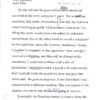For teachers of English Language Arts (ELA), we’ve prepared this document that references several standards that relate to the Holocaust and to using the resources on this site.
COLLEGE, CAREER, AND CIVIC LIFE (C3) FRAMEWORK FOR SOCIAL STUDIES
For teachers of the social studies, this new C3 framework provides an appropriate way to approach the teaching of The Holocaust.
If you’re not already with the framework and how to implement it in your classroom, go here.

SOUTH CAROLINA SOCIAL STUDIES STANDARDS
Standard 3:
Demonstrate an understanding of the economic, political, and social effects of World War II, the Holocaust, and their aftermath (i.e., 1930–1950) on the United States and South Carolina.
5.3.CE
Analyze the cause and effect of government-sponsored policies within the United States and Europe related to the status of different groups, to include the Holocaust. This indicator was developed to promote inquiry into the state-sponsored persecution that led to the Holocaust in Europe. This indicator was also developed to promote inquiry into the fight against discrimination toward marginalized groups in America.
5.3.CC
Analyze the changes and continuities regarding the United States’ international leadership during the period, including the rebuilding of Europe and the resettlement of displaced persons resulting from the Holocaust.
6.5.CE
Explain the impact of nationalism on global conflicts and genocides in the 20th and 21st centuries. This indicator was developed to promote inquiry into the cause and effect relationship between nationalism and world wars. This indicator was also developed to promote inquiry into genocide, including the Holocaust, as well as the creation of the Universal Declaration of Human Rights, and the ensuing conflict that resulted from the creation of the state of Israel.
8.5.CO
Compare South Carolina and U.S. wartime contributions and demobilization after World War II. This indicator was designed to promote inquiry into military and economic policies during World War II, to include the significance of military bases in South Carolina. This indicator was also developed to foster inquiry into postwar economic developments and demographic changes, to include the immigration of Jewish refugees following the Holocaust.
MWH.4.CX
Contextualize World War II and the Holocaust within local and global economic, political, and social developments from 1919–1950. This indicator is intended to encourage inquiry into the relationship between World War II and interwar foreign policies, global business cycles, the rise of totalitarian regimes, and postwar alliances. This indicator was also developed to promote inquiry into the relationship between the Holocaust as state-sponsored systematic persecution and interwar totalitarianism, nationalism, economic turmoil, and World War II.
MWH.5.CX
Examine the Holocaust and its aftermath in providing the context for subsequent developments in international efforts to recognize and protect human rights. This indicator was intended to encourage inquiry into the human experience by examining the nature of oppression, civil war, and genocide. This indicator also supports inquiry into the struggle for civil rights and international efforts to protect human rights in the modern world.
USHC.4.CC
Examine the continuity and changes on the U.S. homefront surrounding World War I and World War II. This indicator was developed to encourage inquiry into the wartime domestic policies during periods of global conflict. This indicator also supports inquiry into America’s response to the Holocaust and the roles of African Americans and women related to the war effort.
NATIONAL CENTER FOR HISTORY IN THE SCHOOLS, STANDARDS FOR US AND WORLD HISTORY (5–12)
Content: The student understands contemporary American culture. Examine the influence of media on, and the role of propaganda in contemporary American culture.
Standards: US History, Era 10, Standard 2D; Historical Thinking Standard 1
Content: The student understands the causes of World War II and Explain the role media played in the rise of the Nazi ideology in Germany and across Europe. Analyze the relative importance of the legacy of World War I, the depression, ethnic and ideological conflicts, imperialism, and traditional political or economic rivalries as underlying causes of World War.
World History Era 8
Standard 4
The causes and global consequences of World War II.
Standard 4 B
The student understands the global scope, outcome, and human costs of the war.
Analyze how and why the Nazi regime perpetrated a “war against the Jews” and describe the devastation suffered by Jews and other groups in the Nazi Holocaust.



